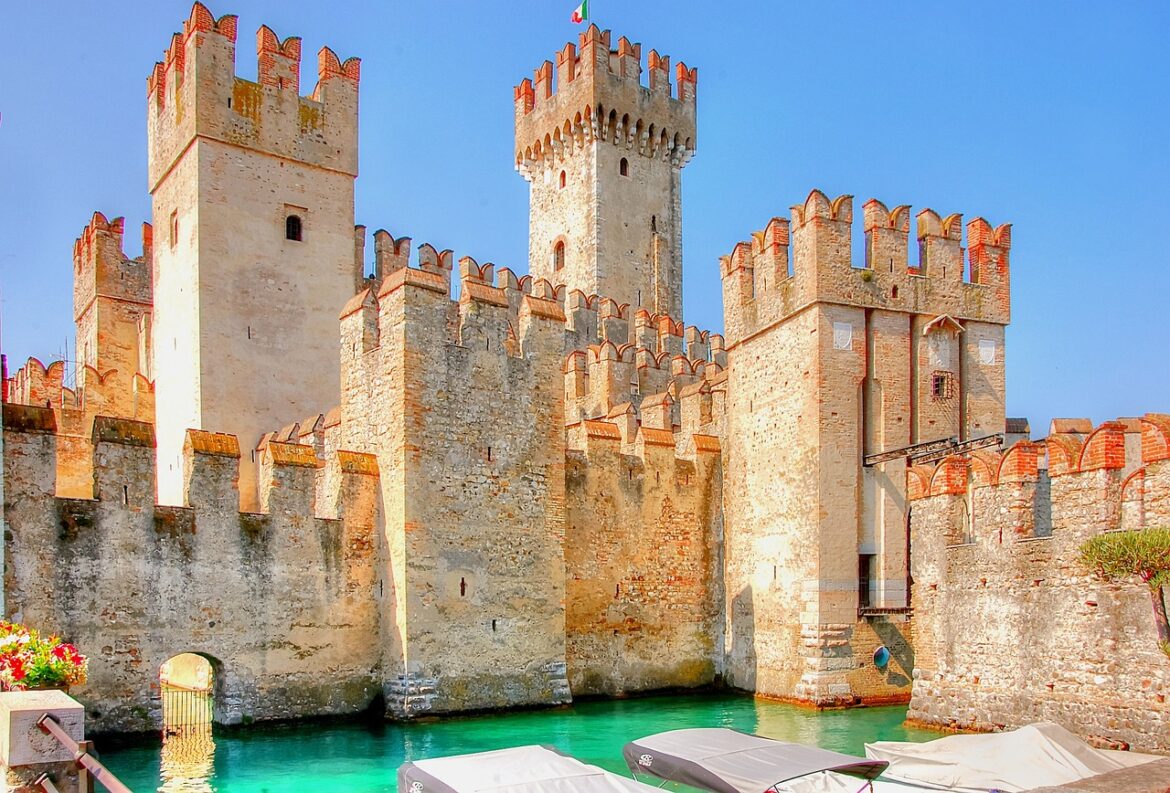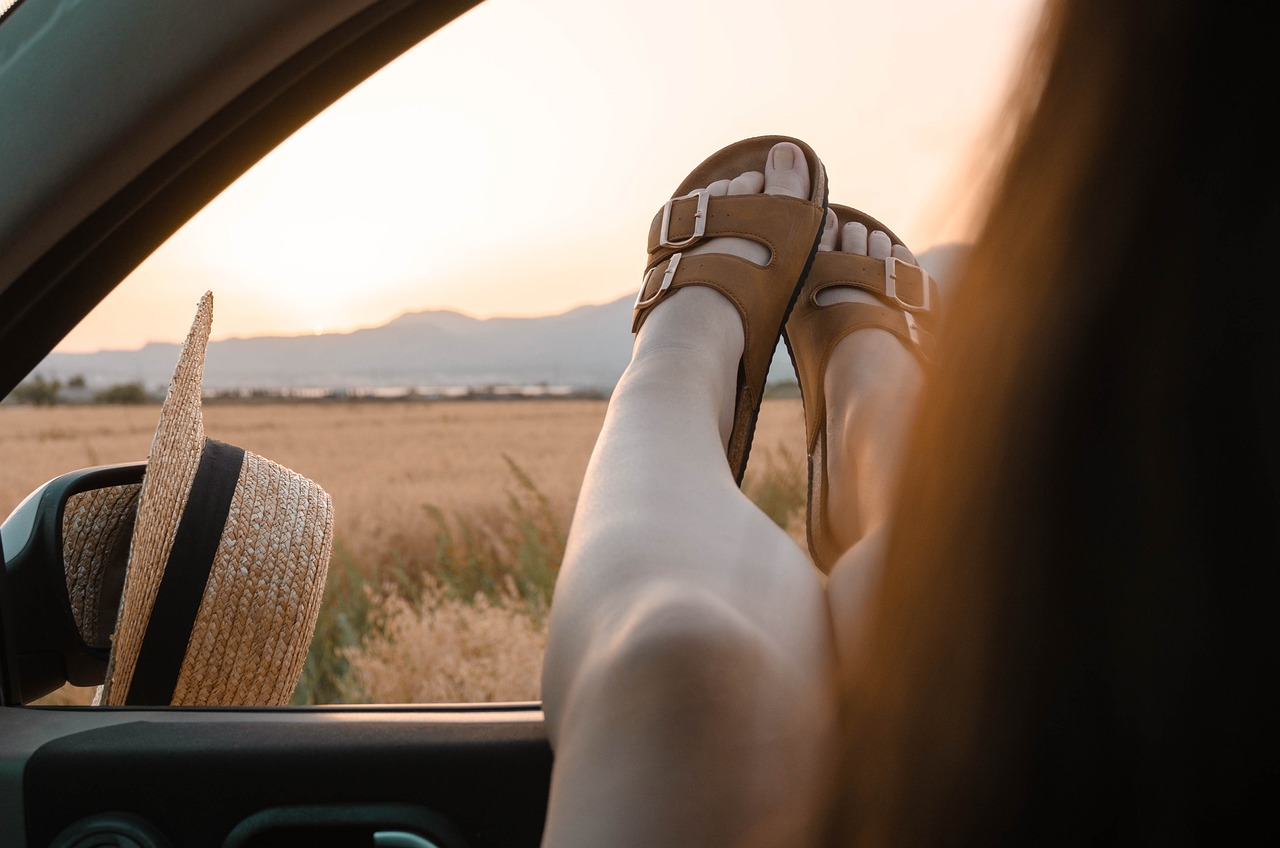Lake Garda is the ideal place to get away from it all for three days and to find out more about its enchanting countryside, history, culture and traditional food and wines. Covering an area of 370km2, this is Italy’s largest lake, and it offers a wide range of attractions to suit everybody. In this article, we’ll give you a few suggestions on how to spend three unforgettable days in your electric car in this little corner of paradise.
The cities and regions surrounding this splendid body of water are replete with Plenitude + Be Charge charging points, so there’s no need to worry about charging your car.
Day 1: Sirmione, Desenzano del Garda and Salò
Our journey begins at Sirmione, a fascinating town located on the south shore of the lake. It’s famed for its thermal waters and Roman ruins. Once you arrive, you can park your car at one of the numerous car parks or at one of our charging points, and begin your visit on foot.
The adventure begins in the morning with a visit to Sirmione’s Castello Scaligero, an imposing 13th century fortress built by the Della Scala family and surrounded by the lake’s waters. From the summit of its towers, you can enjoy a breathtaking panoramic view over the town and the lake.
Continue to the Catullo Caves, an ancient Roman villa dating from the 1st century AD that’s located on a panoramic headland. As you walk among the archaeological ruins, you can imagine how luxurious the lives of its old inhabitants would have been.
For lunch, we recommend the Osteria del Vecchio Fossato, a traditional restaurant that has a welcoming atmosphere and serves traditional dishes from the Garda area. Try the bigoli al torchio pasta with ragù di carne sauce or risotto alla tinca (risotto with tench), both of which are typical of the area. You should also try one of the excellent local wines, such as Chiaretto.
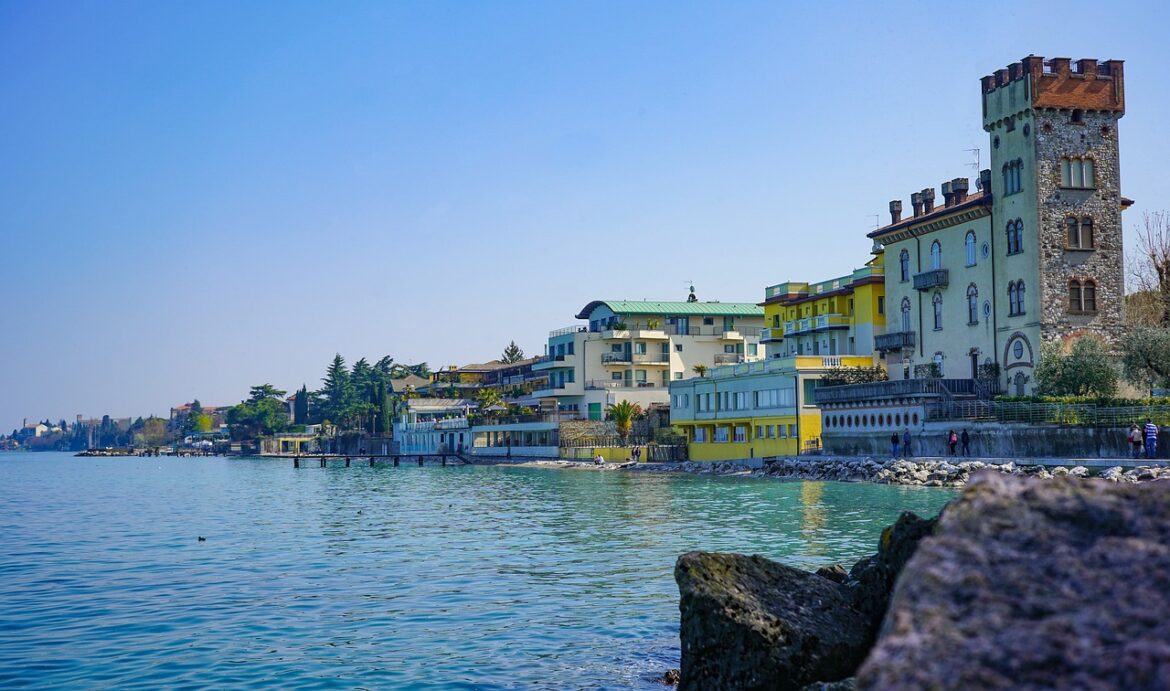
In the afternoon, take your car and head towards Desenzano del Garda, another beautiful town on the south shore of the lake. Go for a walk in its old town centre, visit the port and the Rambotti Archaeological Museum, which houses prehistoric finds from the area. Carry on to Salò, an elegant town on the lake’s western shore. Visit Salò Cathedral and the Museo del Nastro Azzurro museum, dedicated to those Italians who gave their lives during the Second World War.
In fact, during the Second World War, Salò was chosen by Mussolini’s fascist regime as the new capital of the Italian Socialist Republic, a self-proclaimed regime that controlled only part of Italy. Salò was the seat of the fascist government from 1943 to 1945.
Salò is a beautiful and picturesque city, with an old city centre featuring ancient churches, piazzas and cobbled streets. One of the city’s most charming places is the shoreline, a panoramic walk that winds along the lake shore and offers spectacular views of the surrounding mountains.
Over the centuries, this small city has also been a source of inspiration for numerous artists and writers. These include the British poet, Percy Bysshe Shelley, who spent a few months of 1818 there and wrote some of his most famous works there.
For dinner and somewhere to stay, choose from a wide range of restaurants and accommodation on the south shore of the lake, for example in Desenzano del Garda or Salò, the two places we visited in the afternoon. Stay in a hotel, a residence or an apartment, and try the area’s traditional dishes, maybe a dish made with fish from the lake.
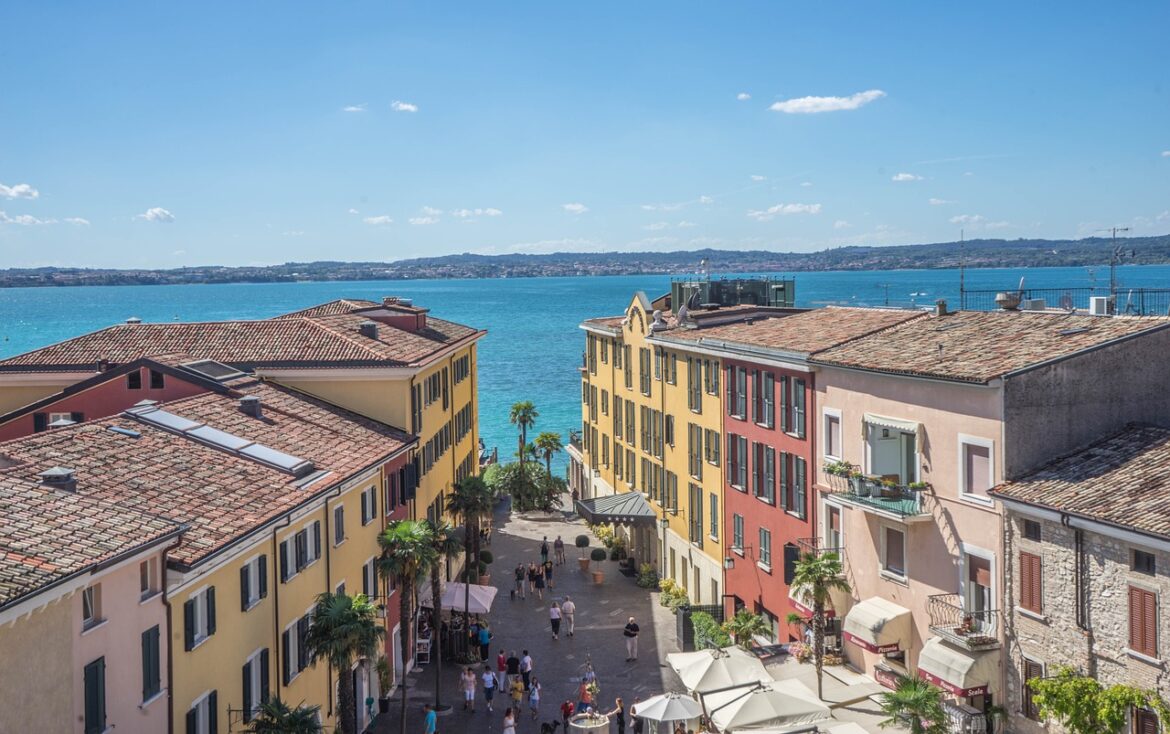
Day 2: Riva del Garda, Gardone Riviera and Malcesine
The second day of our trip takes us to the lake’s north shore, an area characterised by mountainous countryside and pretty towns.
After a good breakfast, get going towards Riva del Garda, located at the far north of the lake. Visit its old town centre, with its distinctive tower, Torre Apponale, and the Museo Alto Garda museum. Continue to Gardone Riviera, where you’ll find the Vittoriale degli Italiani estate, the residence of the poet, Gabriele D’Annunzio.
Visit the museum-house, the park and the open-air amphitheatre, which gives you a splendid view of the lake. D’Annunzio’s life was very intense and adventurous; he died from a heart attack aged 74. He is still the subject of debate and controversy, but you can’t deny that he left an indelible mark on Italian and international culture.
For lunch, return to Riva del Garda and stop at Trattoria La Baita, a friendly osteria with a typical Trentino menu. Try the strangolapreti con burro e salvia (‘priest strangler’ pasta with butter and sage) or canederli dumplings in broth, both traditional dishes from the region.
In the afternoon, head for Malcesine, a pretty town on the eastern shore of the lake. Visit its historic centre, the Castello Scaligero – the castle that the Della Scala family also built here, and the church of San Benigno. Then, it’s on to the Monte Baldo cable car, one of Lake Garda’s most famous attractions, which will take you to an altitude of over 1,700 metres. From here, you can enjoy an incredible 360º view of the lake and the surrounding mountains.
For dinner and accommodation, choose any of the wide range of options available on the northern shore of the lake, for example in Riva del Garda or Malcesine. You can stay in a hotel, B&B or apartment and try some of the area’s well-known pasta and lake fish dishes.
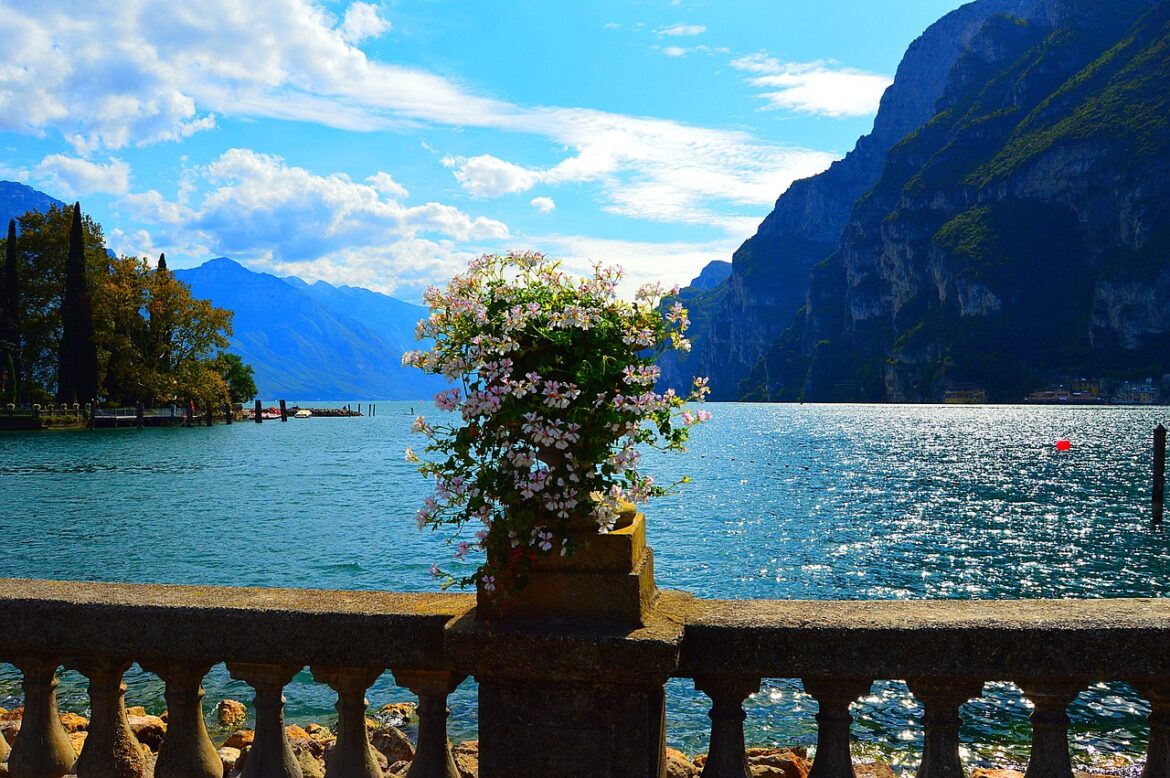
Day 3: Peschiera del Garda and the Valpolicella region
The third day of our visit takes us to the beautiful city of Peschiera del Garda and the renowned Valpolicella wine producing area.
Make sure you get a good breakfast, then head towards Peschiera del Garda, a fortified city located at the south-eastern edge of the lake. Visit its walls, the port and the old city centre. Continue towards the Giardino Sigurtà park, an expanse of green space of more than 60 hectares that features a lake, a maze, a waterfall and a wide range of plants and flowers. Walk along the park’s paths and enjoy the beauty of its nature.
For lunch, head to the Valpolicella area and stop at Trattoria Albergo La Pesa at San Pietro in Cariano, a traditional restaurant that offers typical Veronese dishes. Try the bigoli con le sardelle (pasta with sardines) or risotto all’Amarone.
In the afternoon, visit the wine cellars in the Valpolicella area, one of Italy’s most famous wine producing areas. The name ‘Valpolicella’ derives from the Latin phrase ‘val polis cellae’, which means ‘valley of the many wine cellars’, a reminder that this area has a long tradition of producing wine.
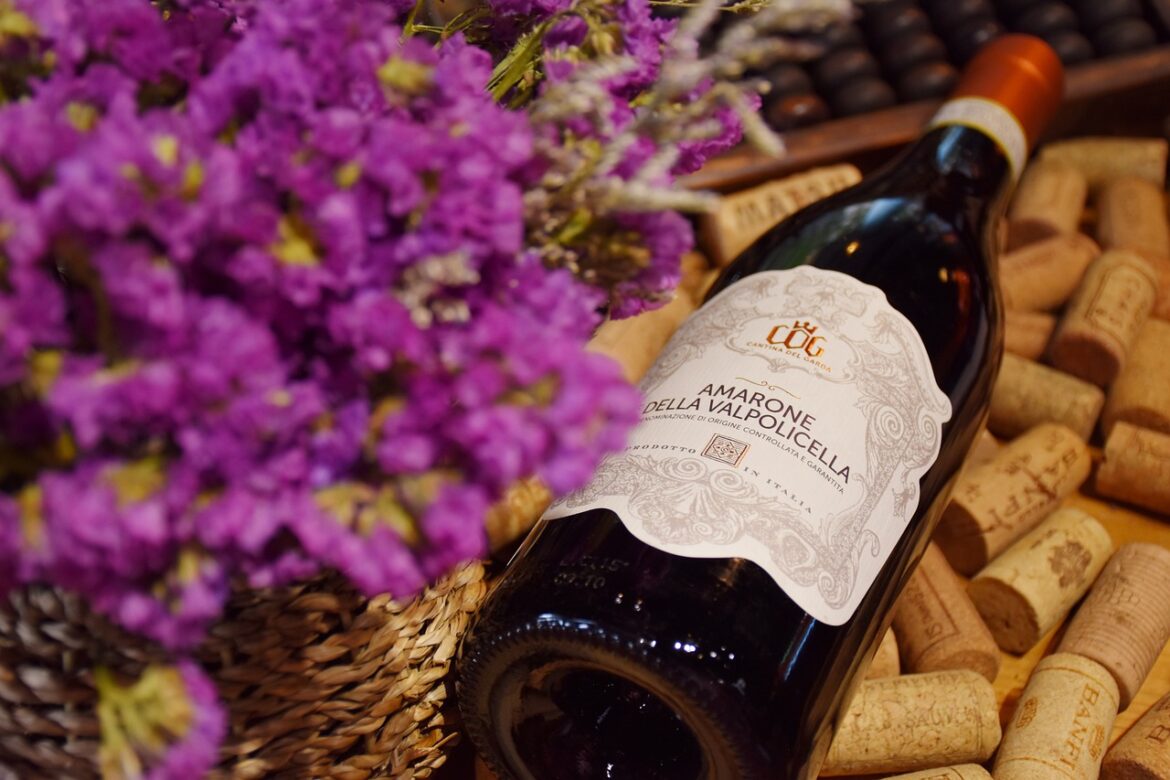
Covering a surface area of approximately 240km², the Valpolicella region is divided into three distinct zones: Valpolicella Classica, situated northwest of Verona; Valpantena, located northeast of Verona, and Valpolicella Orientale, in the east of Verona.
Renowned for producing some of Italy’s most famous wines, the Valpolicella region is home to Valpolicella Classico, Amarone della Valpolicella, and Recioto della Valpolicella. These wines are crafted from native grapes such as the Corvina Veronese, Rondinella, and Molinara and are known for their complex and intense flavor, featuring notes of mature fruit and spices.
In addition to its wine, the Valpolicella region is rich in history and culture, with numerous archaeological sites, historic villas, and old towns to explore. Visitors can enjoy the Church of San Giorgio di Valpolicella, the Sanctuary of Madonna della Corona, and the Villa della Torre alle Grazie.
The Valpolicella region is also an area of outstanding natural beauty, featuring hills, vineyards, and olive groves. Ideal for exploring on foot or by bike, the region offers visitors breathtaking panoramic views, charming towns, and a unique taste of Italian countryside.
For dinner and accommodation, choose any of the wide range of options available on this part of the southern shore of the lake. Stay in an agri-tourism centre or villa and try some typical Veronese dishes in one of the area’s restaurants.
Spending three days at Lake Garda is an unforgettable experience which allows you to discover one of Italy’s most beautiful and interesting areas. Follow our itinerary and you’ll visit the lake’s most captivating towns and cities, savour the beauty of its countryside and find out more about the area’s rich culture and food and wine producing tradition; all possible because the area allows full electric mobility. You can also try out aquatic sports, go for pleasurable walks, eat well and relax, surrounding yourself in a landscape of rare beauty.
